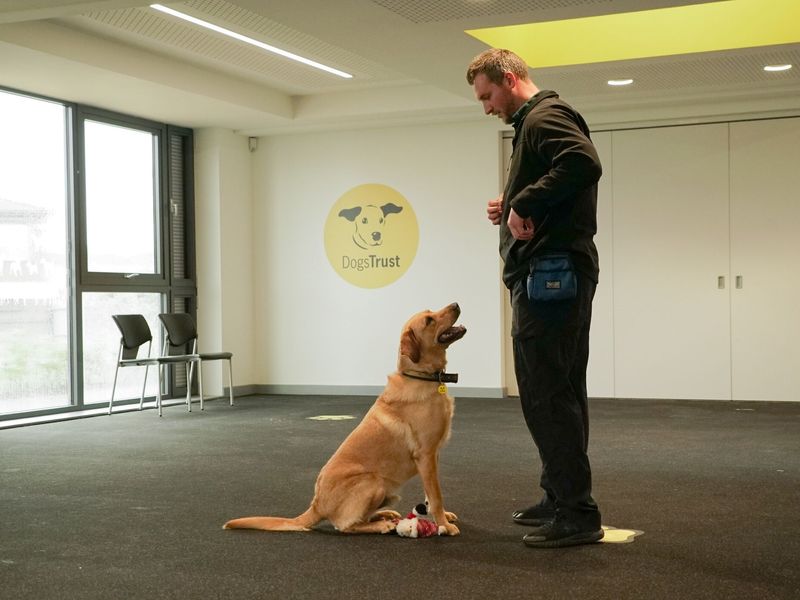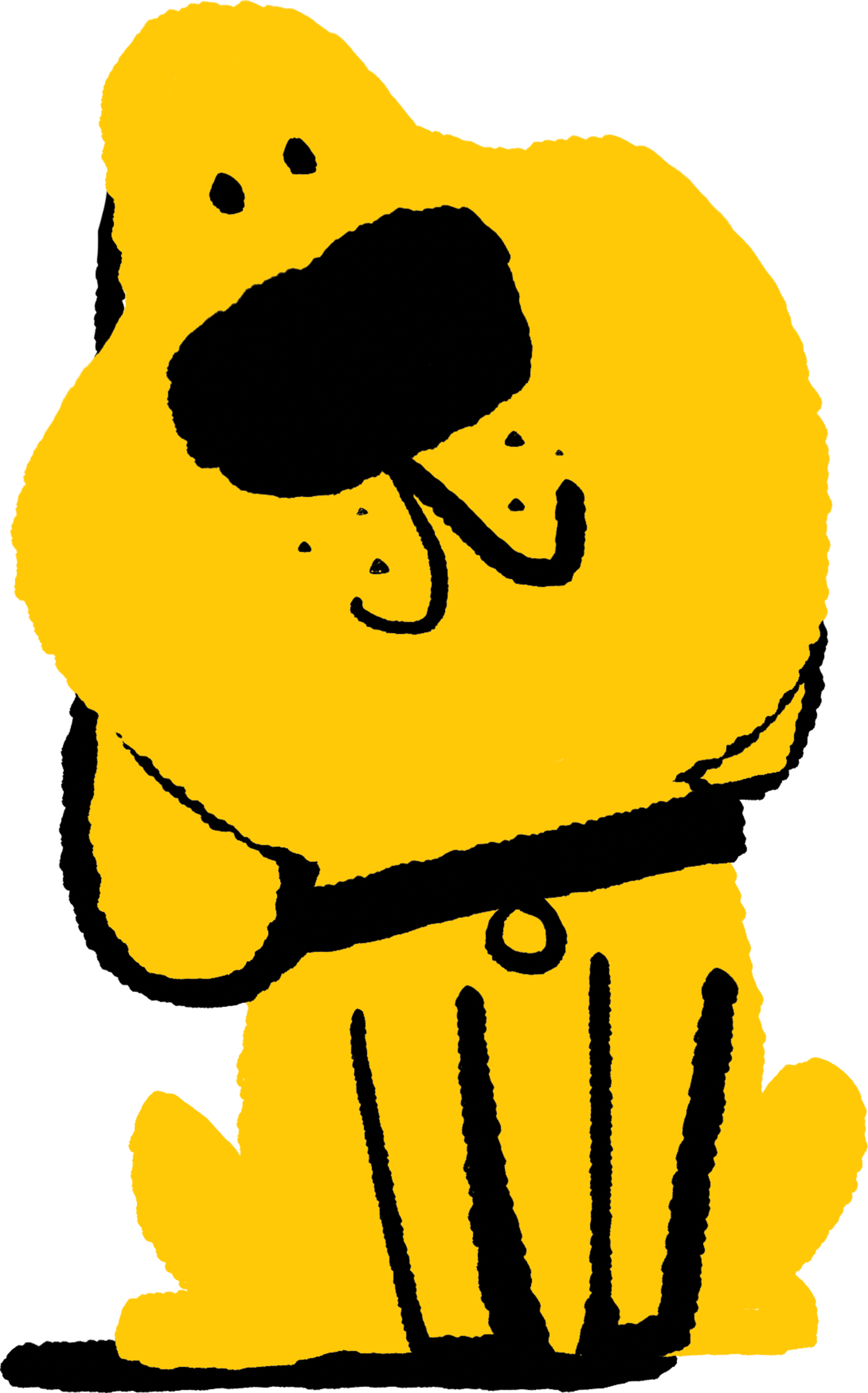How to train your dog not to jump up
Follow our guide to help your pooch keep their paws on the floor.

Most dogs jump up to get our attention. Your dog is likely to jump up at you when they’re excited to see you. But it could also be an attempt to communicate that they’re worried about something. The action of jumping up can become a channel for excited or nervous energy that dogs repeat again and again.
This is because dogs generally do whatever works out well for them. So, if you reward your dog with attention whenever they jump up they’ll just keep doing it. Often, we encourage jumping up in puppies when they’re small and cute. But this can make things confusing for them when they grow up and we no longer want them to behave like this.
Don’t worry if this sounds like your pooch because you can teach them not to do it. Here’s some advice to help you understand how to stop your dog jumping up.
Don’t respond if your dog does jump up
If your dog does jump up at you then don’t react at all. You should stay calm, quiet and wait for them to stop. You can then reward them when all four paws are back on the floor.
Paws on the floor is best
Your dog needs to learn that they won’t gain anything by jumping up. Instead, it’s keeping all four paws on the floor that will get your attention. Make sure you reward your dog with praise when that's the case, especially at times when they’d be most likely to jump up.
You can prepare yourself by making a list of all the situations in which your dog might usually jump up. Be quick to interact with them before they do. This might mean having a handful of treats or their favourite toy with you when coming home from work. Then you can open the door and go straight down to engage with them before they start jumping up.
Don’t tell your dog off for jumping up
Discouraging your pooch from jumping up by telling them off or saying “no, get down” could be rewarding for some dogs as they are getting attention. In fact, they’re more likely to learn that jumping up gets you to look at them, talk to them and touch them. Some dogs will find this desirable. But for others, being told off can be distressing and they might become anxious or confused. This anxiety could cause them to jump up even more in an attempt to make the situation better. So, make sure you stay calm and don’t respond.
Do persist with your training
Whenever you stop responding to any behaviour the way your dog is expecting you to, they’re likely to try that same behaviour with greater intensity. They will be determined to get you to react the way you usually would.
Don’t worry – this is part of the learning process. It can be frustrating but persevere and remain consistent with the training. Over time your dog will learn that there is just no point jumping up any longer. Instead, they start to learn the new, better and safer ways to behave.
Don’t forget, consistency is key
If you’re consistent, your dog will quickly learn what works to get your attention and what doesn’t. Without consistency your dog may get confused and try everything to see what behaviour works best. Make sure all your family and friends are on board with training. Coach any visitors who may interact with your dog before they arrive.
Teach your dog to sit when meeting people
Ask a friend or relative to walk towards you and your dog. When you get close to them, stop a short distance away and ask your dog to sit. Have some extra tasty treats ready to reward them with. Continue to reward your dog for as long as all four paws remain on the floor, giving them a treat every now and again while you talk to your helper. Your helper can also then reward them and give them attention.
If your dog suddenly becomes excited and jumps up, make sure you don’t engage and simply stay calm, quietly waiting to reward the moment they stop bouncing. Telling them to sit again is unlikely to have any effect because they’re so excited. So wait calmly for them to realise this behaviour gets them no attention at all. Reward them right away as soon as they stop jumping up.
If your dog only receives attention from people for sitting when they approach, you should soon notice your dog automatically sitting and waiting for people to interact with them. However, sitting for attention can be very challenging for some especially active dogs. For them, an alternative is hunting for treats on the ground – they will be unable to do this and jump up at the same time.
Ask a friend to help you and have some of your dog’s favourite treats ready, chopped into small pieces with you and your friend taking a small amount each.
Have your friend approach you and as they do, make a big deal about scattering your handful of treats down for your dog to sniff out and enjoy. They’ll be rewarded for not jumping up and keeping all paws on the ground. You and your friend can chat. Then, when your dog has found all their treats and starts looking up, your friend can start to drop their treats down for your dog to find in the same way.
Make sure you’re always prepared
If you need to stop your dog jumping up on walks then make sure when you go out for walkies, you have plenty of their favourite treats ready. This will help them behave politely when you encounter someone. You can then reward them for sitting or scatter-feed them, so they have something to keep them busy while you interact with the other person. It’s also useful to prepare your dog for visitors coming to your home, too.
Contact our Behaviour Support Line
Need help with your dog’s training or behaviour? Contact our Behaviour Support Line for free expert advice.
Call us on 03030036666
or
Our free telephone service is open Monday to Friday 8.:30am to 7.:30pm and Saturday and bank holidays 9.:30am to 5pm.
Related articles

How to train your dog to be calm, relax and settle



